Baseball is a game that involves adjustments. It takes the recognition of a problem, and requires concrete steps to fix a given problem.
Reynaldo Lopez is currently a pitcher with a problem.
To start this young season, Reynaldo is 3-6 with a 6.62/6.10 ERA/FIP. So, it hasn’t been great, and doesn’t project to get much better. His WHIP, HR/9, BB/9, and K/9 are all up from 2018, but only one of those things is a good thing. In fact, Lopez’s HR/9 is currently a full HR higher than it was last season (2.2 vs. 1.2), and his WHIP is at an astronomical 1.673.
Now, it would be foolish of me – an avid Lucas Giolito supporter – to look at these statistics and think they tell the full story of Lopez. So, thanks to the thoughts of one fan after my recent Giolito article, I decided to take a deeper look into Reynaldo Lopez’s season, why he hasn’t repeated his September success, and what he might have to do to experience sustained success on the mound. Thanks to @SoxFan20052020 for the inspiration for this article!
September 2018: Reynaldo Lopez Makes Mechanical Changes
Reynaldo Lopez was absolutely brilliant in September 2018 after a pretty average April-August 2018. He posted a 1.09 ERA, and hitters had a slash line against him of .164/.228/.250. That’s absolutely insane. A lot of what I’m going to share about the change in Lopez last season has been written about before as well by Evan Alvarez of Diamond Digest. You can find that article here.
So, what did change for Lopez? The most important was mechanical. The difference can be seen from a couple starts below, one from July and one from September:
Windup: July, 2018 (Left) and September, 2018 (Right)
Stretch: July, 2018 (Left) and September, 2018 (Right)
The changes are somewhat difficult to see in GIF form, so I’ve drawn some lines and broken down the deliveries a bit more below:
Windup: July, 2018 (Left) and September, 2018 (Right)
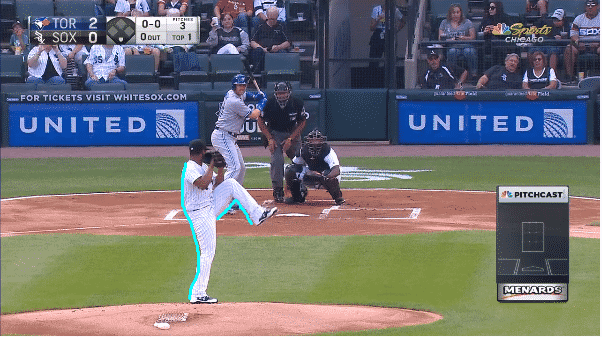
July 2018 Mechanics 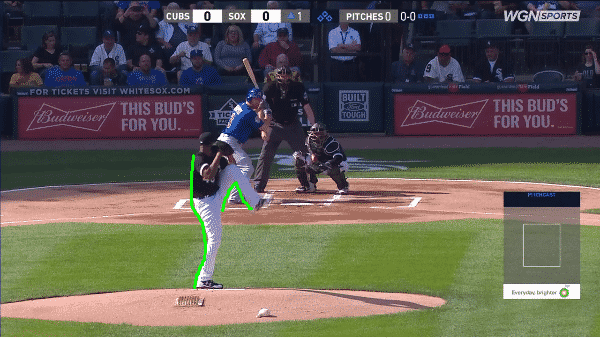
September 2018 Mechanics
Stretch: July, 2018 (Left) and September, 2018 (Right)
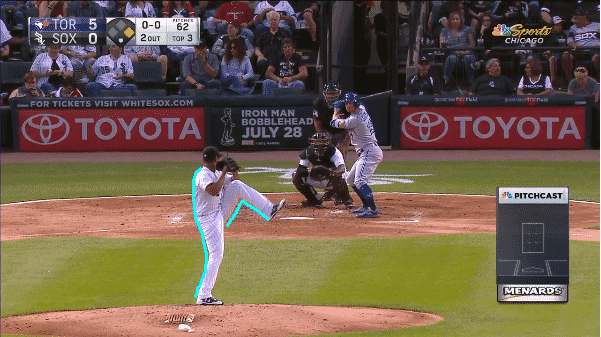
July 2018 Mechanics 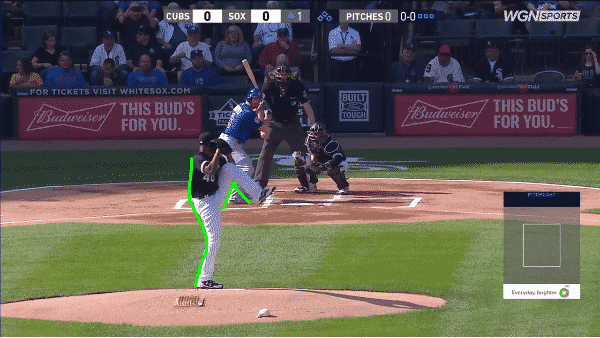
September 2018 Mechanics
Balance and repeat-ability are two of the most important things for a pitcher. If you look at Lopez pre-September, he is falling backwards in his delivery. His leg kick certainly did not help matters, as the large angle it created almost required Lopez to lean backwards to catch himself. With some mechanical changes in September, Lopez used a higher leg kick that allowed him to keep his balance (standing straighter up). Balance allows for a consistent delivery and, therefore, a consistent release point (as you can see below in the release point charts). These were crucial to Lopez’s success in September, and would be a crucial first step to experiencing success in 2019 and beyond.
2019 Season: Not Good
Here’s the good news: Lopez’s mechanics out of the windup this season are almost identical to his mechanics from September 2018.

Now here’s the bad news: Lopez is all over the place out of the stretch. These are three different images from three consecutive starts:
You don’t have to be a major league pitching coach to see that Lopez is trying to make adjustments. Some times, he starts his hands higher up, decreasing the amount of movements in his delivery (Middle). This is a good thing, and mirrors his September mechanics which allowed for balance and less movement overall (KISS – Keep It Simple, Stupid). Other times, Lopez starts his hands low and has varies his leg kick. Some times it’s a bit quicker, other times it’s a lot slower. This is the definition of trouble for a big league pitcher – if a pitcher isn’t able to repeat his mechanics from pitch to pitch or start to start, it’s like trying to learn how to pitch all over again.
Another problem with Lopez’s fluctuating mechanics has been his lack of consistent arm action and consistent release point. Again, Lucas Giolito is a great example of this – if a pitcher can’t keep a consistent release point, he risks tipping off pitches to a hitter, and even worse, it means he isn’t repeating his mechanics from pitch to pitch. Below are three release point charts. The first is from April-August 2018. The second is September 2018. The third is from this season.
Here’s the problem: Lopez’s release point chart looks way more like April-August of 2018 than it does to September 2018. September 2018 was good: consistent mechanics, tight release point chart that made it hard for hitters to pick up the difference in pitches. This means that with all the changes in mechanics we are currently watching, Lopez is struggling to maintain a consistent release point once again. Until he can maintain some consistent mechanics and a consistent release point, it is likely that his struggles will continue.
However, this is only part of Lopez’s story. As I said earlier, Lopez’s mechanics are a crucial first step in experiencing consistent success. His lack of solid “stuff” is the bigger problem that needs to be fixed.
At this point, you’re probably wondering why Lopez’s “stuff” isn’t good enough to help him through rough starts? We’ve seen his electric fastball that can consistently hit 96-98 mph on a good day. The reality is that his “stuff” – whether breaking balls or fastballs – is just not that good.
Below is a chart that looks at where – in percentile form – Lopez falls on a variety of metrics. Two of the most important ones to look at in this chart are Fastball Spin (14th percentile) and Curveball Spin (5th percentile):

Fastball Spin and Curveball Spin are crucial to the success of a pitcher. Fastball Spin has to do with the concept of Perceived Velocity – how fast a hitter feels like a pitch is. For any of you who have played, you’ve probably faced a guy who looks like he’s throwing soft from the on-deck circle, but then you get up there and you get gassed on a couple fastballs. That’s due to Perceived Velocity – pitchers with a high spin rate are able to get a 95 mph fastball up in the zone to look like it’s a 97-98 mph fastball due to the extra rise that comes from a fastball with a high spin rate.
Curveball spin rate looks at how much “drop” a pitcher can put on the ball. This is important to add to the deception of a curveball. For example, it shouldn’t surprise you that Trevor Bauer has one of the best curveballs in baseball, given the amount of drop he has at the velocity at which he throws it:
That is a TIGHT spinning curveball that drops like a 12-6 and is incredibly hard to hit.
Here’s why spin rates are so important. There are two planes that a pitcher can work from: the horizontal plane (left and right) and the vertical plane (up and down). Lopez’s pitches move horizontally A LOT – among the best in the league for his changeup and curveball. Here’s the problem with that: pitches that move horizontally don’t change the eye level of the hitter. They need to move up and down as well to miss bats. If a hitter guesses fastball up in the zone and gets it, he’s going to get wood on it no matter how much it moves horizontally. This is why that, even when Lopez throws a 97 mph at a hitter’s eyes, he can turn on it and drive it. This is why Lopez currently has an outrageous 44% hard-hit rate against him. That’s 10th percentile for the league.
In essence, his pitches are “flat” – they don’t move a lot vertically, and with the Launch Angle Revolution that has occurred in baseball, it is crucial to have quality vertical movement if you want to miss bats.
So, to go back to @SoxFan20052020’s original tweet, Lopez’s inability to locate his offspeed pitches is only the beginning of the problem. Lopez isn’t relying on his fastball any more than usual – he’s always thrown it about 60% of the time. The big problems are two-fold: 1) his mechanics are all over the place, and 2) his “stuff” is just flat right now – it’s not very good. Strike 1 is the most important pitch in baseball, and it’s nearly impossible to consistently throw it if a pitcher is unsure of his mechanics from pitch to pitch. It’s even worse when a pitcher does get that strike over the plate, but it’s an incredibly hittable pitch.
So, what can Lopez do? For starters, he needs to find mechanics that he feels most comfortable with and stick with them. It’s going to take some time to feel good with them, but the worst thing a pitcher can do for his season is continually change his mechanics. Cooper and Lopez need to sit down and watch video from Lopez’s September starts. That’s the best place to start.
A long-term fix for Lopez – should he want to become and remain an effective Major League starter – could involve a change in his arm slot or even a change in the way he throws his fastball. The reality is Reynaldo Lopez needs to find a way to get some “life” on his fastball in the form of spin rate to become effective.
Here’s the issue: there is no conclusive *public* evidence for what increases spin rate (though the Astros seem to have it figured out). The only known way to really increase spin rate is to experiment with different grips and different arm slots. This would require A LOT of work in the offseason in order to fight the forces working on a baseball: gravity and air drag (shown below):
Here’s the video I got the images from if you’re interested in learning more:
Understanding everything about spin rate and drag force and all that fun Physics stuff is not important. If you walk away learning anything from this article, it should be this:
- Consistent mechanics and balance are crucial to a pitcher’s success on the mound. Reynaldo Lopez currently has neither of these, and he is suffering because of it.
- Lopez’s “stuff” is currently subpar right now because of a lack of vertical movement – it is hard to miss bats without vertical movement. Pair this with Lopez’s inconsistencies in his mechanics, and a pitcher with a problem is created.
- Sending Lopez down to AAA isn’t enough to fix this problem. The reality is that Lopez’s starts are probably going to look like this for the rest of the year, and it is going to require an offseason of hard work and open-mindedness to data, experimentation, and most importantly, change.
Giving up on Lopez at this point would be foolish, especially considering no changes have been made. However, if the metrics early on in 2020 look similar to 2018 and 2019, the White Sox should have a short leash on Lopez. Like before, 2020 is the time that patience is almost officially gone for players like Lopez who has been here for a couple years. It’s time for Lopez to make some changes.
Let me know what you think on Twitter @jlazowski14
Featured Photo: Matt Marton – USA Today Sports








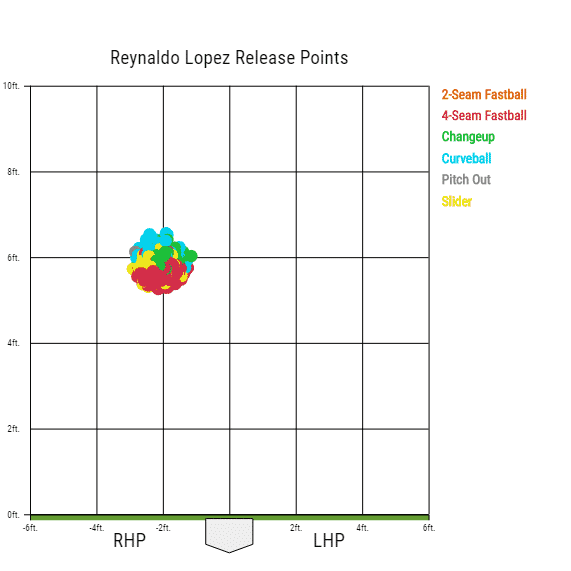
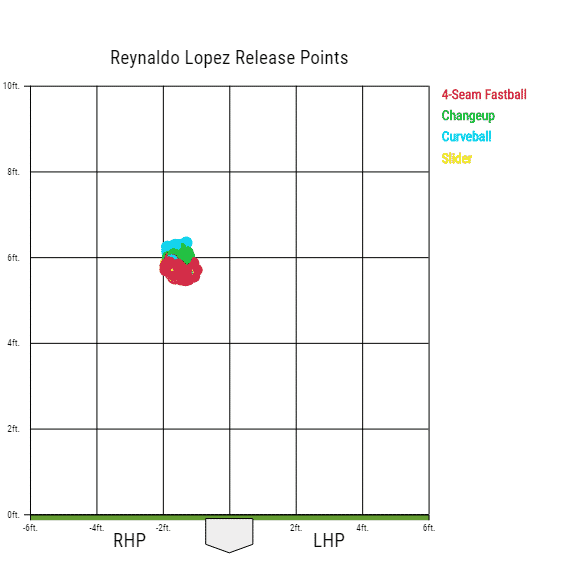

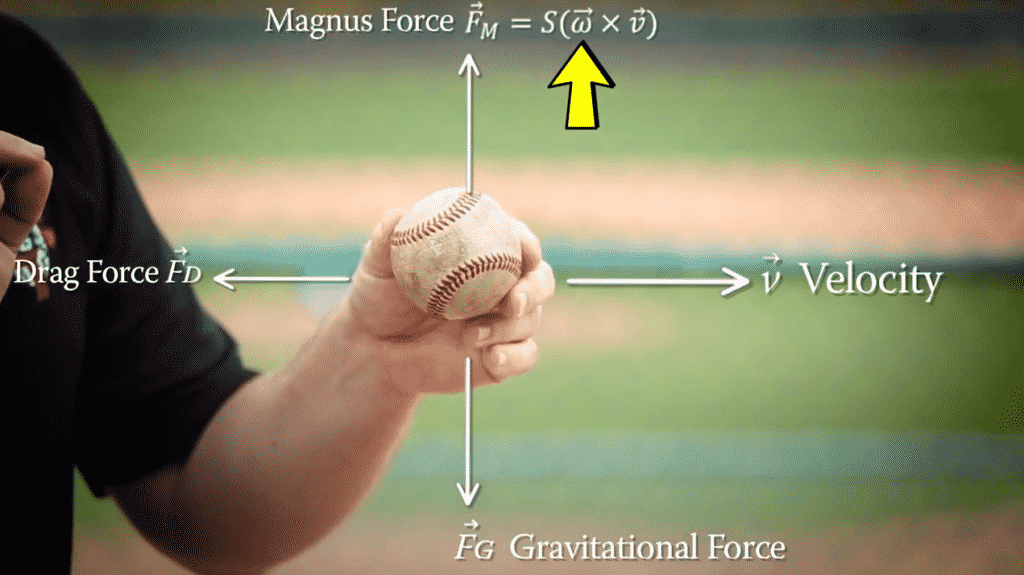

If his hand is big enough,a split finger would be a perfect compliment for Lopez.
So why is our waste of a pitching coach not doing anything with him? Cooper has worn out his welcome. You take out Buerhle Sale and Quintana and he has done nothing. And you and I could have coached those 3. Cooper is the most overated coach in the majors. Not sure why some think the sun rises and sets with him but I am not one of them! A change needs to be made.